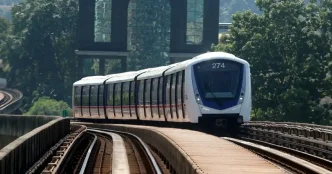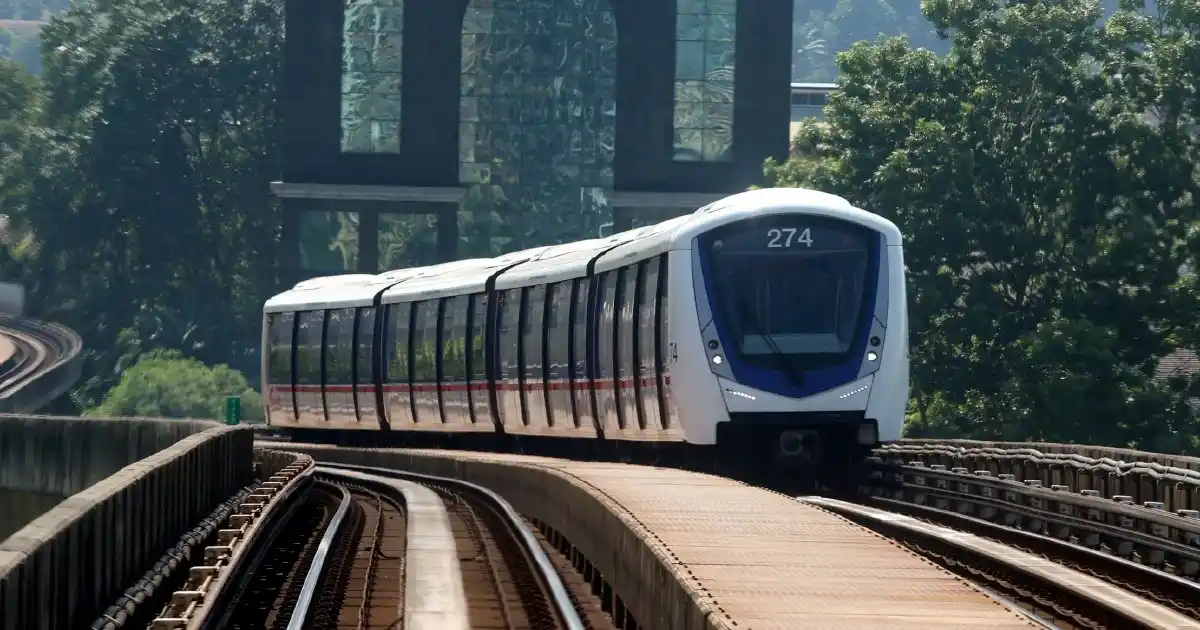Penang, a bustling hub in northern Malaysia, is pushing forward with bold plans to enhance its public transport and road infrastructure, aiming to better connect the island with the mainland. However, these ambitious proposals, including a third road bridge and a light rail transit (LRT) bridge, are running into significant challenges due to limited space and concerns over port operations and navigational safety. As the state grapples with balancing growth and practicality, questions loom over how these projects will unfold without compromising economic lifelines like the North Butterworth Container Terminal (NBCT) and Swettenham Pier Cruise Terminal (SPCT).
Competing Priorities: Infrastructure vs. Port Operations
At the heart of Penang’s infrastructure plans are two major cross-strait links: a proposed third road bridge in the northern part of the Penang Strait, connecting Gurney Drive on the island to Bagan Ajam on the mainland, and an LRT bridge in the south, linking Macallum Street Ghaut to Butterworth. If realized, these structures could transform connectivity for residents and boost economic activity. However, their proposed alignments threaten to encroach on critical maritime zones, potentially restricting access for large vessels such as container ships and cruise liners that frequent the NBCT and SPCT.
Datuk Sasedharan Vasudevan, chief executive officer of Penang Port Sdn Bhd (PPSB), highlighted the spatial constraints that define Penang’s dilemma. “This isn’t just about the port. It’s about how Penang grows with so little space left” he said. His primary concern centers on the third bridge, originally envisioned as an undersea tunnel but now planned as an overwater structure. The bridge’s alignment cuts directly across a channel used by approximately 5,000 vessels annually, necessitating a design that avoids obstructing maritime traffic.
For safe passage, Sasedharan emphasized the need for a vertical clearance of at least 100 meters to accommodate modern vessels. He pointed out that the world’s largest cruise ship, Icon of the Seas, stands at 85 meters tall, and future ships could be even larger. By comparison, globally renowned structures like the Golden Gate Bridge in San Francisco offer a clearance of 67 meters at high tide, while Japan’s Kita Bisan-Seto Bridge provides up to 105 meters. To meet Penang’s needs, the third bridge may require a staggering 2,000-meter main span without supporting pillars in the water—an engineering feat that would rival some of the longest spans globally, such as Russia’s Russky Bridge at 1,104 meters.
LRT Bridge: Navigational Risks and Additional Costs
While the LRT bridge, planned to span 4 kilometers between Macallum Street Ghaut and Butterworth, does not directly impede the port’s expansion zone, it raises separate concerns about navigational safety and ferry operations. PPSB has tentatively agreed to a vertical clearance of 60 to 62 meters for the LRT bridge’s main span. However, Sasedharan stressed that the span width—proposed at a minimum of 600 meters—is critical for safe passage of vessels. “We may need tugboats stationed permanently in the area to manage risks. At RM10,000 a day (US$2,100), who pays for that?” he questioned.
Adding to the complexity, the height of the bridge structures could interfere with flight paths from the nearby Royal Malaysian Air Force base in Butterworth. There are also plans to incorporate jogging and cycling paths alongside the railway on the LRT bridge, which could further complicate design and safety considerations. Sasedharan underscored the need for comprehensive marine risk analysis and aviation reviews, stating, “We’re not against the LRT. But this needs a full marine risk analysis, an aviation review and more.”
Government Response: Balancing Development and Feasibility
Penang’s state authorities acknowledge the concerns surrounding port operations and are taking steps to address them. Zairil Khir Johari, the state’s infrastructure and transport committee chairman, assured that the port’s role in economic development is a priority. “Our port is crucial to economic development. We realigned the third bridge’s plan to make sure NBCT’s expansion will not be hindered” he said. He drew parallels with other busy waterways, such as the Bosphorus Strait in Istanbul, which accommodates three bridges and around 40,000 vessels annually, including oil tankers and cruise ships.
Zairil emphasized that Penang is not venturing into uncharted territory with its infrastructure ambitions. “These civil engineering feats are accomplished all over the world. The third bridge is still many years away from being finalized, so we have plenty of time to ensure the best engineering solutions will be used” he added. The state’s forward-looking approach aims to position Penang as a globally competitive region, but the path to achieving this vision remains fraught with technical and logistical hurdles.
Economic Stakes and Regional Implications
Penang’s port facilities are a linchpin of Malaysia’s northern economic corridor, handling significant cargo and cruise traffic that fuels local and regional economies. The NBCT, in particular, is poised for expansion to meet growing demand, but any restriction on vessel access could undermine these plans. The potential “boxing in” of port operations by the proposed crossings raises questions about long-term economic impacts, not just for Penang but for Malaysia’s trade competitiveness in the Strait of Malacca, one of the world’s busiest shipping lanes.
Beyond economics, the infrastructure projects carry social implications. Improved connectivity could alleviate traffic congestion on existing bridges, enhance public transport options with the LRT, and foster closer ties between Penang Island and the mainland. Yet, the inclusion of recreational features like jogging paths on the LRT bridge hints at a broader vision to improve quality of life—an ambition that must be weighed against safety and cost concerns. If additional expenses, such as permanent tugboat deployments, are passed on to taxpayers or port operators, public support for these projects could wane.
Engineering Challenges in a Constrained Landscape
Penang’s spatial limitations amplify the engineering challenges of these projects. The third bridge’s potential 2,000-meter main span would place it among the most ambitious bridge projects globally, requiring cutting-edge design and significant investment. Structures of comparable scale, such as China’s Duge Bridge with a vertical clearance of 565 meters or France’s Millau Viaduct at 270 meters above ground, demonstrate what is possible—but often at immense cost and with unique geographical advantages like deep gorges that Penang lacks.
Moreover, the LRT bridge’s proposed 600-meter span, while smaller, must still contend with the dual demands of maritime and aviation safety. The proximity to the air force base adds a layer of complexity, as tall structures could disrupt flight operations. Resolving these issues will likely require innovative solutions, such as advanced cable-stayed or suspension designs, alongside rigorous risk assessments to ensure no compromise on safety.
Public Sentiment and the Path Ahead
As Penang’s plans take shape, public and stakeholder engagement will be crucial. While the state government appears committed to finding engineering solutions, the concerns raised by port authorities reflect broader anxieties about unchecked development in a densely packed region. Sasedharan’s call for holistic planning resonates with those who fear that prioritizing infrastructure over maritime access could have unintended consequences for Penang’s economy and identity as a port city.
On social media platforms like X, local voices and regional analysts have begun weighing in, with some expressing cautious optimism about improved connectivity, while others highlight the need to protect port operations. The debate underscores a fundamental tension: how to modernize Penang without sacrificing the very assets that underpin its prosperity.
As these projects remain in the planning stages, with the third bridge still years from finalization, there is time to address these challenges. Yet, the stakes are high. Penang’s ability to navigate this delicate balance between development, safety, and economic vitality will shape its trajectory for decades to come. Will the state emerge as a model of innovative urban planning, or will spatial constraints and competing priorities stall its ambitions? Only time—and meticulous planning—will tell.















